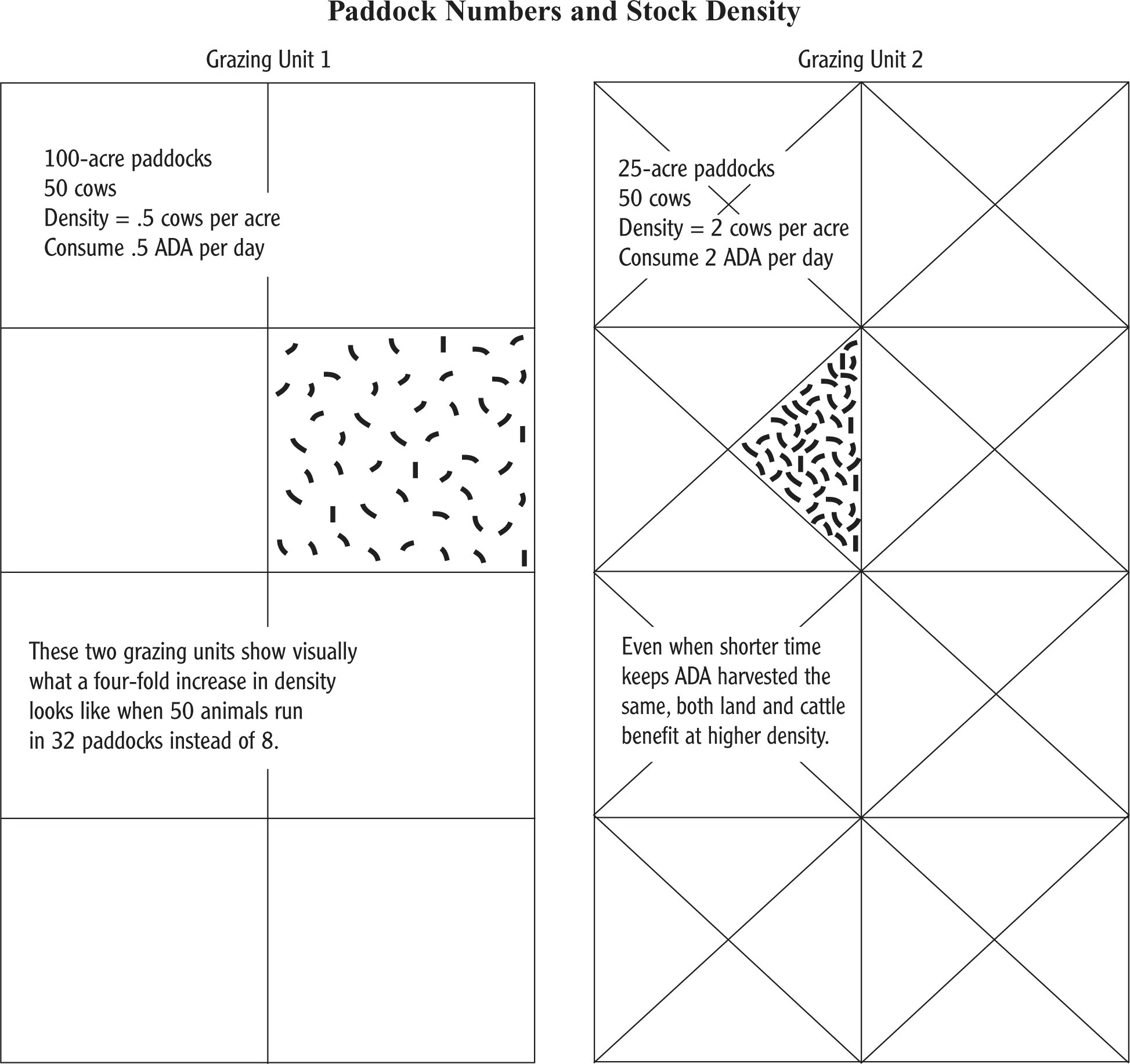I'm a fan of the step-ins. Yes they take time but i don't know how people say it takes more than a few minutes. Greg Judy makes bundles of them and drops them in place while spooling out polybraid from an ATV, one person walking behind and setting posts and braid. So it is a two person operation but could be modified to one (I'll let you know my
UTV should be working in a few weeks). The critical element is training the animals to one wire! Yes this takes a few months but so far it is as easy as he says with my sheep. I backfence with one wire after six weeks, tasty tempting stuff gets two wires.
The bigger issue I see with cows is water, they drink a lot more. Water point placement defines paddock possibilities.
For sheep, I don't think i have remotely used the same paddock so far. This is important to prevent compaction. There will be some by a water point with cows per Greg. His videos explain this in great depth, and I have been modifying them to small (10 acres) application.
My implementation was perimeter hot fence- step one
Temporary (light green) divider fence which stays up for 3-4 weeks.
Paddock division set up every 4 days or so- only about 20 posts per paddock line on a mini-reel (darker green). These can be leapfrogged so the water point is accessible- no back fence. With sheep they don't drink enough to matter.
Total time to set up the divider fence ~ 30 minutes every three weeks. Each paddock division is probably 10 minutes. If I am in a rush I just drop the hot side on the perimeter and open a few sections by the light green fence and clean it up later. I use a total of three minireels and one big reel at a time. I could get by with two minireels without a back fence. Setting up the new paddocks on the other side requires one more large reel and two available minireels. The sheep will follow grain to the new paddock but you could also make an alley with minireels like Greg.
Get some bungees to keep the bundles of step-ins from getting crazy and I can easily carry all the necessary step-ins in two trips. If I didnt have the UTV coming on line, I would modify a wheelbarrow to spool out wire while I throw posts out at intervals (this would be as simple as a clamp on the wheelbarrow handle). One pass to get materials out, another to set posts and clip in the braid.
Where to put the fence? I have silvopasture alleys, immature trees and likely to get bark stripped. So I double the posts on either side of the trees right now (step 0.5). Still one minireel is enough to cover the spoke from the perimeter to the main divider fence. At this point I have seen what they will strip and what they won't and I am letting them graze in the hedge/tree area as much as possible. Winter they will probably need complete exclusion. Until the trees mature this almost doubles the paddock division setup and teardown. Its worth it I think, probably one more year everything will be big enough to let them in the trees.
Then the paddocks can be divided right down between the hedgerows like Mark Shepard does. Animals get shade and variety of forage. Sheep are less destructive than cows (which is one of the reasons I vetoed the cows) and I figure on average this takes me 15 minutes a week. MAybe 20 depending on the complexity of the paddock (this is a simplified drawing).
Materials- three spools of polybraid line, two big reels, five minireels, and I think I have about 120 step-ins. Total is $40 per braid spool, $40 per big reel, $15 per minireel, and $2.20 per step in. So total of around $400. Energizer is the perimeter.
The cool thing is that with the minireels there are places I can put the sheep that would be impossible with even semipermanent fencing. They are - no joke- currently outside the kitchen maybe 20' from me. There is no more decorative yard space, just paddocks and TV substitute. I suspect I will spend under two hours mowing this year (I clipped the grass trying to seed out a couple weeks ago on the side the sheep are off). One pass per side, kill the tree seedlings and set the grass back to vegetative mode. When the numbers increase I will move them more frequently which means more time setting fence and no mowing per Greg- and he hasn't lied yet.
Semipermanent fencing sounds good but simply saves the time moving posts- nothing more. It would make it very tough to mow in my configuration with alleys. Insulators degrade at the worst times. And its not attractive. You could do it with birdhouses on the posts or something to make it a little more attractive I guess. Cost is at least 3x. going to get cattle paths because they will be in the sme configuration and do the same thing they did the last time. Still better than permanent paddocks.
I would have gotten the better step ins- the ones from New Zealand, they are almost twice the price but much better built. Sadly I couldn't get them when I was building out. Maybe someday...

 9
9




 1
1





 1
1




 2
2




 3
3






 3
3





 3
3




 5
5




 3
3




 3
3




 5
5




 5
5








 3
3




 1
1




 2
2

















